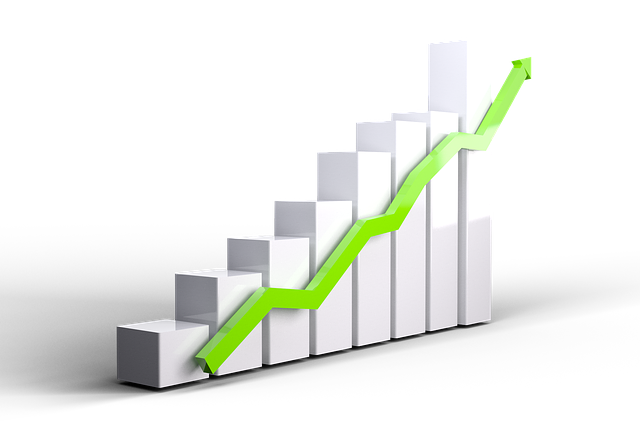PO financing is a powerful tool that transforms future receivables into immediate cash, helping businesses manage cash flow during periods of delayed payments or seasonal sales fluctuations. It simplifies accounts receivable, covers operational expenses, and provides a buffer against financial challenges. Benefits include improved liquidity, faster decision-making, and positive supplier relationships. However, it involves fees and interest charges that need proper management to avoid debt cycles. Strategic use of PO financing can boost cash flow, support growth, and provide a competitive advantage. Best practices include integrating it into financial strategy, optimizing internal processes, building strong provider relationships, prioritizing high-value POs, and proactively managing outstanding POs.
“In today’s dynamic business landscape, efficient cash flow management is a game-changer. One innovative solution gaining traction is purchase order (PO) financing, a strategic approach to enhancing financial flexibility. This article delves into the transformative power of PO financing for robust cash flow management. We explore its role in optimizing operations, from understanding the concept and its impact on cash flow to implementing effective strategies. Discover how this financing method can provide much-needed benefits while mitigating potential drawbacks.”
- Understanding PO Financing and Its Role in Cash Flow Management
- The Impact of PO Financing on Cash Flow: Benefits and Drawbacks
- Strategies for Effective Cash Flow Management with Purchase Order Financing
- Real-World Examples: How PO Financing Can Improve Cash Flow
- Best Practices for Utilizing PO Financing to Optimize Cash Flow
Understanding PO Financing and Its Role in Cash Flow Management

PO financing is a powerful tool that significantly impacts cash flow management for businesses. It works by allowing companies to obtain funding against outstanding purchase orders (POs) from customers, essentially converting future receivables into immediate cash. This innovative approach enables businesses to manage their cash flow more effectively and maintain stability during periods of delayed payments or seasonal fluctuations in sales.
By leveraging PO financing, businesses can improve their cash position by accelerating the collection of money owed to them. This not only helps in covering operational expenses but also provides a buffer against unexpected financial challenges. Moreover, it simplifies the accounts receivable process, as the financier handles the paperwork and collections, allowing companies to focus on core business activities. The benefits of PO financing for cash flow management are substantial, making it an attractive option for businesses aiming to optimize their financial health and overall growth.
The Impact of PO Financing on Cash Flow: Benefits and Drawbacks

PO financing can significantly impact cash flow management, offering both advantages and potential drawbacks for businesses. When a company utilizes purchase order (PO) financing, it essentially receives funding from a third party before making a purchase. This pre-financed amount helps cover the cost of goods or services, providing an immediate boost to the business’s cash flow. It allows companies to manage their cash more effectively, especially during peak seasons or when dealing with slow-paying clients, as it ensures funds are available for operations and can help avoid potential cash shortages.
However, there are some considerations. PO financing typically involves fees and interest charges, which can add up over time, impacting overall profitability. Additionally, businesses need to be cautious not to overspend or rely heavily on this form of financing, as it may create a cycle of debt if not managed properly. Despite these drawbacks, for companies with strong purchase order history and reliable suppliers, PO financing can be a powerful tool to improve cash flow management and support growth.
Strategies for Effective Cash Flow Management with Purchase Order Financing

Effective cash flow management is a cornerstone of any successful business, and purchase order (PO) financing offers a powerful strategy to achieve this. By leveraging PO financing, businesses can streamline their payment process, enabling them to manage cash flow more efficiently. This approach provides a direct link between purchasing goods or services and ensuring timely payments, reducing the time lag that often occurs with traditional invoicing methods.
With PO financing, companies can free up working capital tied up in outstanding invoices, allowing for improved liquidity. This has a significant PO financing impact on cash flow, enabling businesses to fund day-to-day operations, invest in growth opportunities, or even weather unexpected financial storms. The benefits extend further, as it helps in maintaining positive relationships with suppliers, ensuring a steady supply chain, and facilitating faster decision-making processes, ultimately contributing to the overall health of cash flow management.
Real-World Examples: How PO Financing Can Improve Cash Flow

PO financing has proven to be a powerful tool for businesses seeking to optimize their cash flow. Real-world examples illustrate its impact on cash flow management, especially for companies with seasonal demands or those dealing with lengthy payment terms from clients. By utilizing purchase order (PO) financing, businesses can receive funding against outstanding POs, enabling them to cover immediate expenses and operational costs without waiting for customer payments.
This method provides a steady stream of working capital, allowing companies to maintain robust cash flow management. For instance, a manufacturer with recurring orders from a major retail client may leverage PO financing to secure funds before the expected payment date, ensuring they can meet their own supplier obligations and sustain production during peak seasons without financial constraints. Effective cash flow management through PO financing ultimately contributes to business stability and growth by facilitating timely operations and strategic investments.
Best Practices for Utilizing PO Financing to Optimize Cash Flow

Utilizing PO financing effectively can significantly enhance cash flow and provide a competitive edge to businesses. Best practices involve leveraging this tool as an integral part of the financial strategy, ensuring timely submission and processing of purchase orders (POs). By implementing efficient internal processes, companies can optimize the PO financing impact on cash flow. This includes automating PO tracking, setting clear approval thresholds, and establishing strong relationships with financing providers for streamlined access to funds.
Additionally, prioritizing high-value or essential POs for financing can maximize the cash flow management with PO financing benefits. Businesses should also carefully review terms and conditions, negotiating favorable repayment schedules and interest rates. Effective management of outstanding POs and proactive cash forecasting further strengthen the purchase order financing and cash flow relationship, enabling better decision-making and improved overall financial health.
